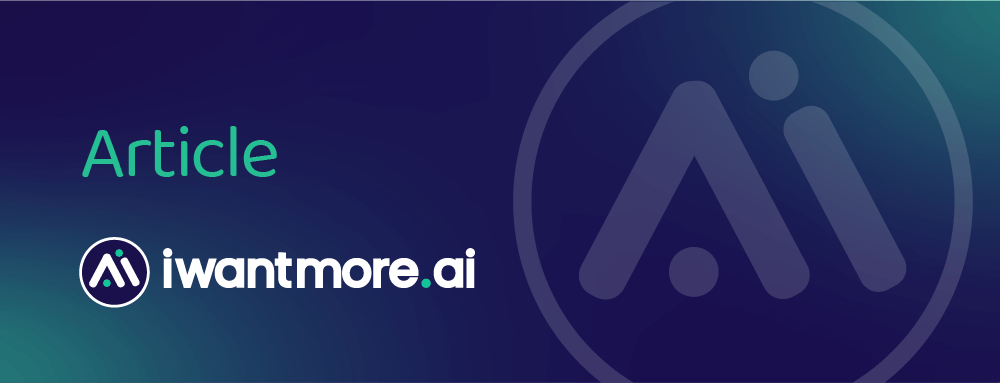
Why should AI literacy matter to your business?
I’m going to deliberately start this article with a big number to pique your interest. According to McKinsey, AI could add up to $4.4 trillion annually to the global economy. $4.4 trillion is more than the current size of the UK’s economy. It sounds impressive, but I think this monster number is unrealistic without a huge skilling and re-skilling task taking place. This is why I want to talk about AI literacy and why I think it’s so important, especially for businesses.
AI literacy: it’s not just for techies
Some might think AI is only for tech teams or companies with big budgets, but that’s just not the case. AI literacy is for all. It means everyone in your business knowing enough about AI to make informed decisions, to ask the right questions, and to understand how AI could (or should) fit into their job and business.
This doesn’t mean everyone needs to know in detail how each and every model, with random names like Chat GPT-4o or Claude 3.5 Sonnet, works from a technical point of view. But everyone does need to know which tool to use for the right task, what it’s good for, what it’s not, and where it (or even AI as a whole) might not be the right choice. The power of AI literacy lies in its potential to demystify AI and turn it from a daunting black box into an approachable, every-day part of modern work.
Why does AI literacy matter?
- Competitive edge: The list of benefits of AI is pretty much endless, but to pick a few, businesses that understand AI can identify opportunities faster, automate mundane repetitive tasks, and potentially deliver better customer experiences. Imagine knowing how to use AI to make sense of your previously indecipherable customer data, allowing you to personalise your services.
- Risk management: It’s no secret, AI has its risks – data privacy, biases, ethical considerations. An AI-literate team is better equipped to recognise any issues early, making sure that AI is implemented in ways that are ethical and match your company’s values.
- Driving Innovation: The best ideas for AI use cases will most likely come from those who understand their daily processes the best – your team. AI literacy across your whole company (not just select groups) can help your wider team to identify opportunities where AI could genuinely make a difference.
What should businesses consider to boost AI literacy?
- Start with the basics: AI literacy doesn’t mean trying to train your team on machine learning algorithms. Start by understanding the fundamentals – what AI can do, the different types of AI, and show your team some real-world examples relevant to your industry.
- Foster a culture of learning: Encourage everyone in your business to get curious about AI. A culture of learning turns AI into an exciting opportunity rather than a buzzword. Workshops, short courses, and informal use case demonstrations during lunch-and-learns can make AI accessible. As well as learning updates in our weekly AI council meetings, we’ve created an AI learning Teams channel that everyone shares the latest things they’ve learned. It doesn’t have to be onerous.
- Keep It practical: Focus on the tangible and real world. Show your sales people how AI can reduce their admin burden with tools like Glyphic, or your marketing team how they can improve campaigns with a tool like Jasper.ai. When people see AI’s practical, day-to-day benefits, engagement increases.
AI is a team sport
Embedding AI in your organisation requires change and change works best when every member of your team is educated, informed and feels involved. AI literacy can transform your business – you just need to get started.
If you’re wondering where to begin, get in touch. Whether its running AI training for your team or mapping out the first steps of your AI journey, we can help.
Other AI articles you may be interested in:

Governments across the world are racing to develop and deploy AI, but their approaches couldn’t be more different. The United States, China and the United Kingdom have all released formal action plans in 2025 that give us a clear sense of their priorities, politics and philosophies on AI. Here’s what they’re doing and what it tells us.

We say it to every business we meet. Regardless of the project, you can have the coolest, sexiest, best bit of tech out there, but without the people being on board it is a complete waste of time and money. Rolling out AI is no different. It’s about people. What’s the best way of bringing people along on any tech journey? Other people.

Artificial intelligence is hungry for energy. Behind every chatbot, Copilot, or agent are servers burning a lot of power. As more UK companies adopt AI tools, it's worth paying attention to how much energy those tools use and what that means for your sustainability targets and reporting requirements.

AI is no longer a future trend — it’s a present-day advantage. While some businesses are building AI agents and transforming operations, others risk falling behind. This article looks at what’s driving the AI divide, why foundational knowledge matters, and how even small steps can unlock real competitive value. If you’re standing still, you’re already losing ground.

It was only a year or two ago that the role of prompt engineer was being touted as the next great career path. Thousands of job ads appeared. People the world over updated their LinkedIn profiles to highlight their prompt engineering skills. Fast forward a couple of years and the role is already on its way out.

The CTO is swamped with the day to day, the COO wants to see progress, the CFO wants to see hard ROI, and the CEO is reading headlines about competitors appointing ‘Chief AI Officers’ and is wondering why you don’t have one too. If this sounds familiar in your business, you might be wondering whether it’s time to create (or hire) a dedicated AI leader.
iwantmore.ai – The AI consulting firm that helps you build a smarter business
Wherever you are with your AI implementation initiatives, we have a range of stand-alone AI quick start services to help you fast track the transformative benefits of AI across your business.



